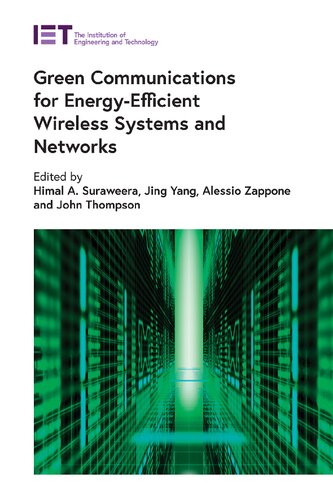

Most ebook files are in PDF format, so you can easily read them using various software such as Foxit Reader or directly on the Google Chrome browser.
Some ebook files are released by publishers in other formats such as .awz, .mobi, .epub, .fb2, etc. You may need to install specific software to read these formats on mobile/PC, such as Calibre.
Please read the tutorial at this link: https://ebookbell.com/faq
We offer FREE conversion to the popular formats you request; however, this may take some time. Therefore, right after payment, please email us, and we will try to provide the service as quickly as possible.
For some exceptional file formats or broken links (if any), please refrain from opening any disputes. Instead, email us first, and we will try to assist within a maximum of 6 hours.
EbookBell Team

4.4
92 reviewsThe ICT industry is a major consumer of global energy. The energy crisis, global warming problems, dramatic growth in data traffic and the increased complexity of emerging networks are pushing academic and industry research towards the development of energy-saving and energy-efficient architectures, technologies and networks in order to reduce the carbon footprint while ensuring efficient and reliable communication networks, and environmental sustainability. Attractive solutions for the design and implementation of energy efficient wireless networks and 5G technologies include massive MIMO, non-orthogonal multiple access, and energy harvesting communications. Tools from areas such as machine and deep learning are being investigated to establish optimal approaches and understand fundamental limits. Moreover, new promising heterogeneous and decentralized network architectures and the Internet-of-Things (IoT) will have an impact on the successful implementation of future and next generation green wireless communications.
The aim of this edited book is to present state-of-the art research from theory to practice, and all aspects of green communication methods and technologies for the design of next generation green wireless communication systems and networks. This advanced research title will be of interest to an audience of researchers, engineers, scientists and developers from academia and the industry working in the fields of ICTs, signal processing, networking, power and energy systems, environmental and sustainable engineering, sensing and electronics. It will also be a very useful text for lecturers, postdocs, PhD and masters students researching the design of the next generation wireless communication systems and networks.